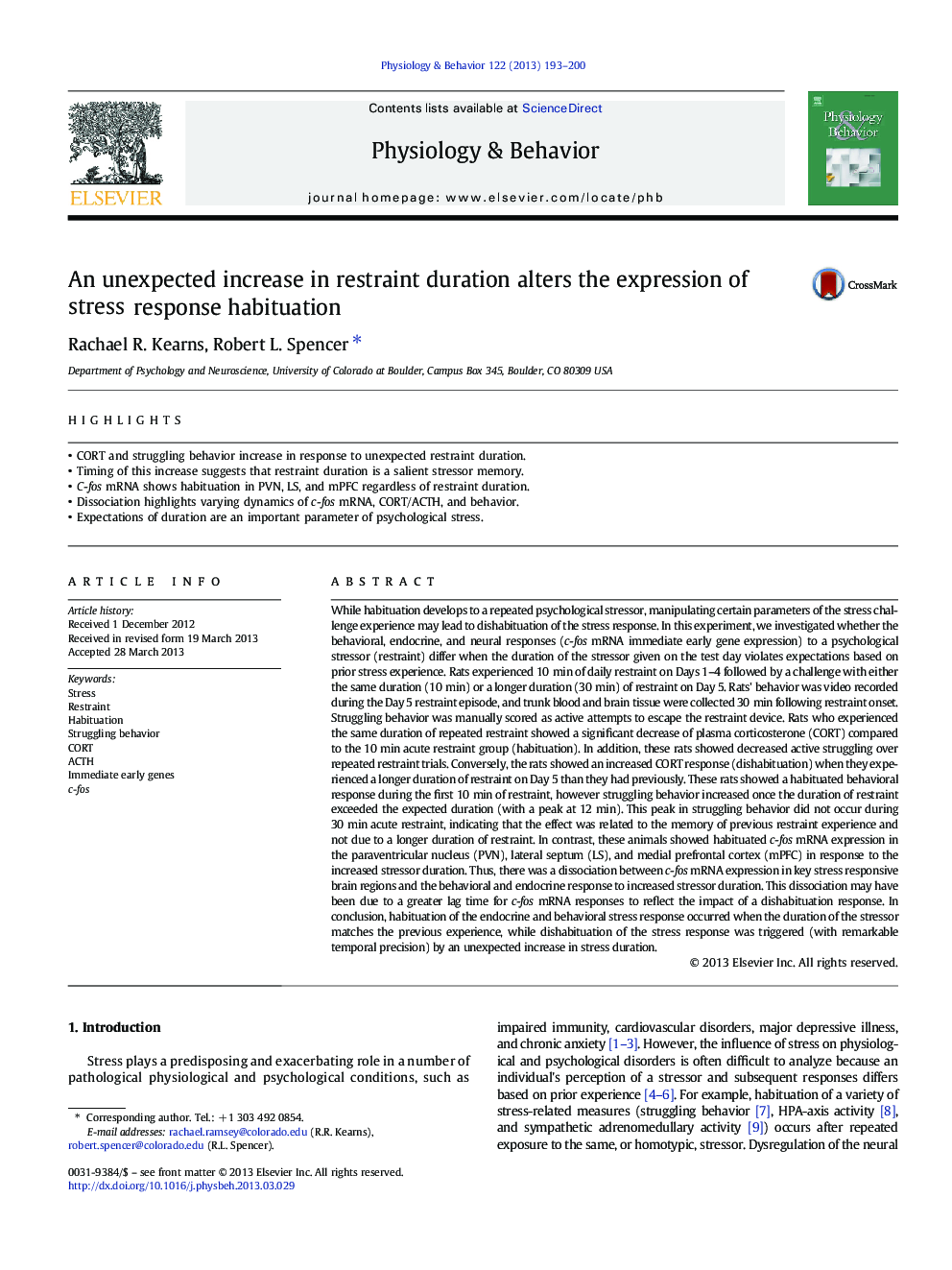| کد مقاله | کد نشریه | سال انتشار | مقاله انگلیسی | نسخه تمام متن |
|---|---|---|---|---|
| 5924386 | 1571195 | 2013 | 8 صفحه PDF | دانلود رایگان |
- CORT and struggling behavior increase in response to unexpected restraint duration.
- Timing of this increase suggests that restraint duration is a salient stressor memory.
- C-fos mRNA shows habituation in PVN, LS, and mPFC regardless of restraint duration.
- Dissociation highlights varying dynamics of c-fos mRNA, CORT/ACTH, and behavior.
- Expectations of duration are an important parameter of psychological stress.
While habituation develops to a repeated psychological stressor, manipulating certain parameters of the stress challenge experience may lead to dishabituation of the stress response. In this experiment, we investigated whether the behavioral, endocrine, and neural responses (c-fos mRNA immediate early gene expression) to a psychological stressor (restraint) differ when the duration of the stressor given on the test day violates expectations based on prior stress experience. Rats experienced 10Â min of daily restraint on Days 1-4 followed by a challenge with either the same duration (10Â min) or a longer duration (30Â min) of restraint on Day 5. Rats' behavior was video recorded during the Day 5 restraint episode, and trunk blood and brain tissue were collected 30Â min following restraint onset. Struggling behavior was manually scored as active attempts to escape the restraint device. Rats who experienced the same duration of repeated restraint showed a significant decrease of plasma corticosterone (CORT) compared to the 10Â min acute restraint group (habituation). In addition, these rats showed decreased active struggling over repeated restraint trials. Conversely, the rats showed an increased CORT response (dishabituation) when they experienced a longer duration of restraint on Day 5 than they had previously. These rats showed a habituated behavioral response during the first 10Â min of restraint, however struggling behavior increased once the duration of restraint exceeded the expected duration (with a peak at 12Â min). This peak in struggling behavior did not occur during 30Â min acute restraint, indicating that the effect was related to the memory of previous restraint experience and not due to a longer duration of restraint. In contrast, these animals showed habituated c-fos mRNA expression in the paraventricular nucleus (PVN), lateral septum (LS), and medial prefrontal cortex (mPFC) in response to the increased stressor duration. Thus, there was a dissociation between c-fos mRNA expression in key stress responsive brain regions and the behavioral and endocrine response to increased stressor duration. This dissociation may have been due to a greater lag time for c-fos mRNA responses to reflect the impact of a dishabituation response. In conclusion, habituation of the endocrine and behavioral stress response occurred when the duration of the stressor matches the previous experience, while dishabituation of the stress response was triggered (with remarkable temporal precision) by an unexpected increase in stress duration.
Journal: Physiology & Behavior - Volume 122, 2 October 2013, Pages 193-200
